
Kentaro Mori - November 15th, 2003
Revisions:
11.22.2003
01.13.2004
This is a quick summary of new work being done on the Trindade Island case.
Previous works relevant to what is presented here are:
Martin Powell: http://homepage.ntlworld.com/mjpowell/Trindade/Trindade.htm
Luis R. Noguez:
El OVNI de la Isla
Trinidad
Kentaro Mori:
Trindade- D˙vida, Boatos e Fraude and
Trindade-
Doubt, Rumour and Hoax
Hopefully, the information here will soon be presented in a more concise way, and with
more evidence.
The source for all the images below are digital files kindly forwarded to me by Vicente-Juan Ballester Olmos. They are scans made by Claudeir Covo of his first generation prints.
All processing was made using Corel Photo-Paint 11. Animations done with Macromedia Flash MX.
Thesis
All four images of the UFO on the Trindade Island case are versions of only one original image.
On all four
photos, the image is only: rotated, mirrored and possibly resized and stretched.

On the image above, no resizing nor rotation, nor any modification aside cropping was made to the images of the UFO. Below, the images were contrast enhanced (with different values for each image), but again with no resizing nor any other modification:

Initial correction
Though
all digital files from Covo's scans seem to have been scans taken in the same scale, and all
original prints seem to have the
same size, the scale of the images seems different if we assume all four photos were taken
with no adjustement on the camera between them.
To realize this, it's quite convenient that it's possible to create a panorama image
from all four photos, since there are overlapping (redundant) parts of the
Island photographed. The result can look like this, but only if we resize the
photos (note: this panorama lacks
much precision):
To those interested, there's also this panorama (the same as above, but bigger and with no transparency).
From the overlapping parts, we can mark the resize needed to get a match, and presume this resize is approximately what can be applied to the whole photo to get them all in the same scale, presumedly in relation to the original negatives. All photos were resized in relation to the first photo. The result was:



So, we just have to resize P2 to 80% and P3 to 95%, and all images will be with the same approximate scale. It's with these already resized/corrected images with which we will deal below. So, when "no resize" is referenced below, actually there was this initial size correction of P2 and P3.
Why these prints seems to have different scales in relation to the presumed same scale/setting of the camera negatives is uncertain. And, on this, it should be noted that it would also be appropriate to try to correct the contrast and brightness of all four images before beggining, since their contrast and brightness also seem to differ. We could again try to take the island as reference for this, but on this work this was not attempted.
Further confirmation of the 'initial correction' of Covo's first prints
Vicente-Juan Ballester Olmos' first prints (which can be seen here)
seem to have all the same scale. This allows we to confirm the rescaling done
above, based on the overlapping parts of the island.
P1 (Olmos print 100% : Covo print 100%)
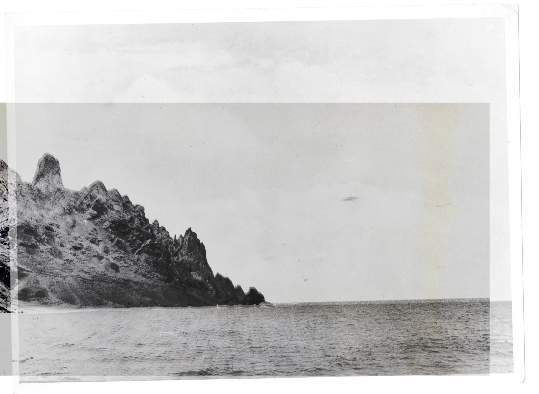
P2 (Olmos Print 100% : Covo print 80%)

P3 (Olmos Print 100% : Covo print 95%)
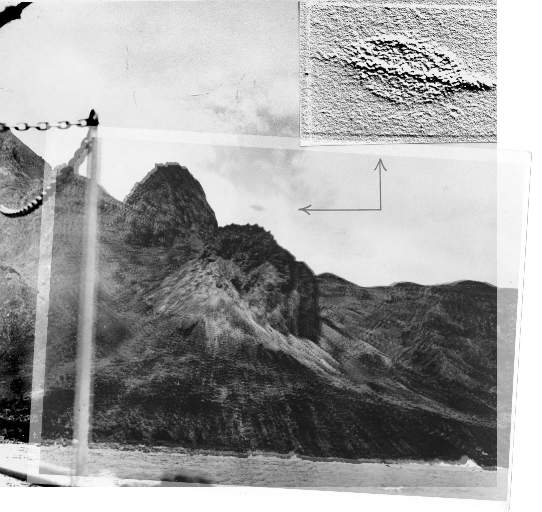
P4 (Olmos Print 100% : Covo print 100%)
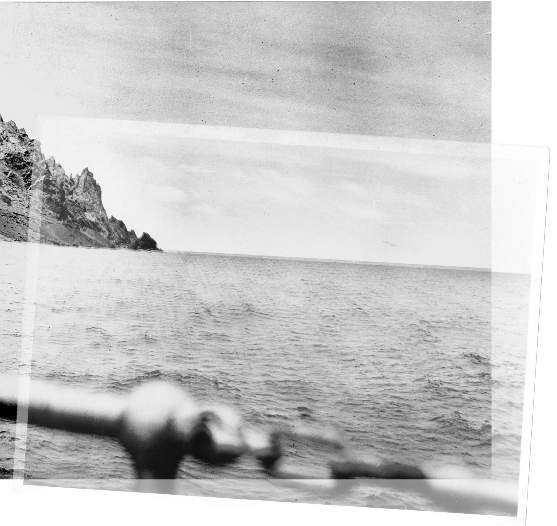
The comparisons above are also useful to note the differences between the two sets of first prints. Note that on Covo's P2 and P3, there's some distortion (some parts of the images match, others don't). This is probably due to a spherical aberration due to the differing rescalings done, and is further noted on Comparison between two first print scans from two sources.
Comparisons
Initial corrections done, the comparisons below of the images of the UFO already
are all in the presumed same scale, and repeating, all derived from Covo's first print scans.
Comparison between P1 and P2. Contrast enhancement:
P1

P2 - rotated 180 degrees, same contrast enhancement as before

P2 - rotated 180 degrees, different contrast enhancement

Animation comparing P1 and P2 above (different contrast values), but no resize.
Comparison between the image of the UFO on Photos 1 and 2 (rotated 180 degrees). Both images were processed with the threshold filter with exactly the same values. No other processing was made.
P1

P2

Animation comparing the two images above, with no resizing, and P2 rotated around 180 degrees.
Comparison between the UFO on P1 and P2. The images were processed using the "local equalization" filter. Same values for both images. No resizing.
P1

P2 (rotated 180 degrees)

Animation comparing the two images above. Again, no resizing, and the same values were applied with the same filter (local equalization).
Comparison between P1, P2 and P3. Processed with threshold filter, different values for each. The P3 on this source had low resolution, so I used P1 and P2 with the same low resolution:
P1 (rotated 180 degrees):

P2

P3

Animation comparing P1 and P3 above:
P1P3 (No resize, both rotated)
Animation comparing P2 and P3 above:
P2P3 (Noresize, P3 rotated)
Comparison between P1, horizontally flipped, and P4. Both contrast enhanced with different values.
P1 horizontally flipped

P4 RESIZED

Animation of the image above. It must be noted: NO ROTATION NOR
RESIZING OF EITHER IMAGE WAS MADE!
P1 horizontally flipped and P4
The Spanish resercher Manuel Borraz has also made his own modifications and comparisons of all four photos. He resized and rotated the original images and changed their brightness and contrast values. He also made a 180 degrees rotation of the first photo in relation to the second, and vertically flipped (mirrored) the fourth image, in relation to the third. The result is:

a - P1, rotated a little more than 180║ to compare it to b (P2).
b - P2.
b' - P2 narrowed on the horizontal; included as a suggestion to compare
it to the others.
c - P3.
d - P4 inverted on the vertical (not rotated 180║, but mirrored)
A local equalization filter was applied to all images of the UFO, P2 and P3 were inverted and P4 mirrored, and they were resized. The resulting comparison:
Conclusions
This work confirms the previous work done with scans of the Brazilian UFO
mag. It also lends support to the original work by
Martin J. Powell based on scans from Ronald
Story's book.
This work dealt with original digital images directly scanned from first generation prints, with better resolution. These images also provided a reference with which we could try to put all of them on the same scale in relation to the original negatives, where we presume that all photos were taken with exactly the same camera settings, and ignore as not significative the distortions caused by distance, and the movements made by Barauna (and even the ship) while taking the shots.
The result is that we can now more safely declare that all four images are too much similar to be different images of a real physical object photographed as it travelled through the sky. We not only have rotation, of more than 180 degrees with no significative change of the image (from P1 to P2), but a mirroring of the image (P4 in relation to P1 - horizontal flip - or P2, P3 - vertical flip). This mirroring cannot be convincingly explained by a "flipping UFO", even one with "no shadow effect", as recently proposed by researcher Brad Sparks (cf UfoUpDates list) as a response for the acknowledged inversion of the image of it from P1 to P2.
As researcher Manuel Borraz also writes, "it's implausible that the inferior spot [also referred as the "dome" on other works] appears on this asymmetric position in all forms [rotated, and mirrored] on a supposed tridimensional object who came and then went... with a different perspective at each moment". It's more likely that these images are the result of phographic trickery, where one source image was copied many times with rotation and mirroring.
How this proposed repeated copy of one original image, with rotation, mirroring and possibly resizing was done still needs to be verified, and to this, the original negatives are essential. We can suggest - but emphasizing that in this case, the means are less relevant than the evidence of hoax itself - that the photos were indeed double exposed, again in agreement with the original work of Powell. If the original image was of a Twin Bonanza, this was not studied here, but the contrast enhanced P1 does seem similar to it, and it would be an explanation for the original image having an asymmetrical spot (it would be the shadowed cabin), and all other apparent aspects of what seems to be the original image.
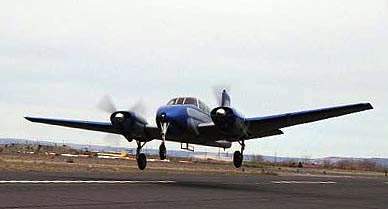
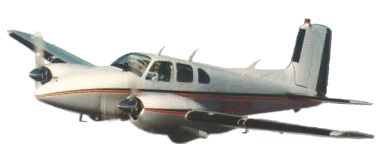
There have been comments of how it would be impossible for a double exposure to create a dark object on a light background, as in the Trindade photos. In this case, we quote a suggestion made by Borraz:

"There's a double exposure of the image of the landscape A and the image
B of the UFO with a white background. The result would be something like C.
There was no light subtraction at this point. But if you darken the result, to
compensate for the overexposure, you will get something like D". This was
digitally made, using a multiplier to merge the two images, and is not provided
with the intention to be an accurate depiction of what would be the results
with an actual film. It's just a nice illustration to help to explain the
suggestion for those who may have a difficulty to understand the idea. See also Impossible Double Exposure?
and Frank Salisbury's reproduction
of the Trindade photos, presumedly with a non-usual double exposure
technique, as presented on his
statement on the 1968 UFO Symposium -- pointed out by Manuel Borraz.
Barauna himself claimed that the photos were overexposed. He later treated four of them (to "enhance the contrast") in his own lab. It's essential to analyze the original negatives to confirm or deny the suggestion that the photos are the result of double exposure. But the evidence of photographic trickery may already be acknowledged on first prints. Hopefully, that was shown in this work. From now on, we only need to further confirm it.
Using the same image of the UFO on all four photos, Almiro Barauna may have played one of the biggest pranks on the history of ufology. It's no small feat.
Acknowledgements
This work would not be possible if it were not for the digital files provided by
Vicente-Juan Ballester Olmos. It also counted with valuable comments from Luis
Ruiz Noguez and contributions by Manuel Borraz. The main thesis was derived from
the work of Martin Powell, who decided to seriously analyze the original claim
of inversion by Capt Sunderland, and first suggested that all images were
version of just one original image.
Certainly though, all errors in this work are only mine, including my terrible English.
END (for now)